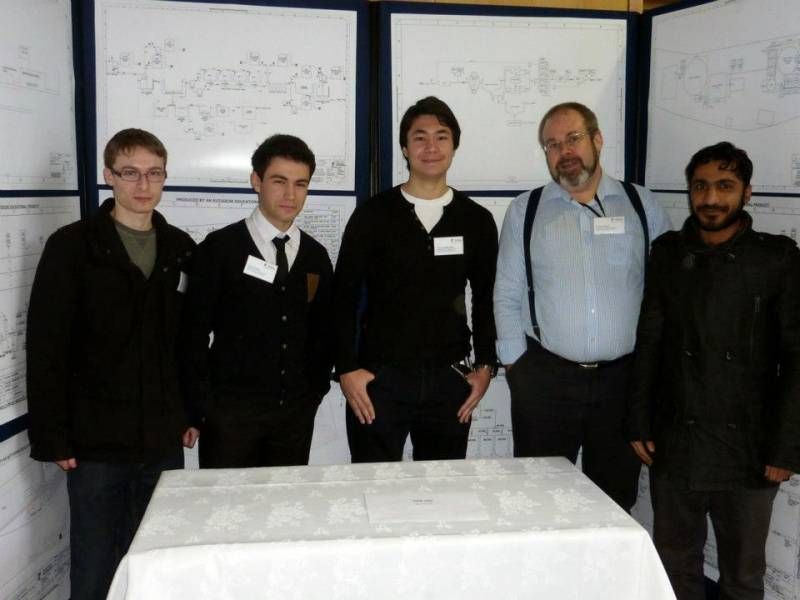Beginner’s Mistake in Chemical Engineering Education
Published on by Sean Moran, Principal Engineer in Technology
The most interesting aspect of teaching engineering is finding the things which students think they understand but do not. Once I had spotted them in an academic setting, I started seeing them again and again in professional practice. Not only do many students leave university with many misunderstandings about basic engineering concepts, they may never correct them in professional life.
Beginner’s mistakes:
“It takes an engineer to undertake the training of an engineer and not, as often happens, a theoretical engineer who is clever on a blackboard with mathematical formulae but useless as far as production is concerned.” – The Rev EB Evans

Academic Myopia
Many of the errors which follow are often hard-wired into academic design techniques. In summary, best simply forget everything you were told in academia about process design. Those who taught you have almost certainly never designed a unit operation which has been built, let alone a whole plant.
Lack of consideration of needs of other disciplines
Real process plant designers have to take into consideration the needs and desires of several other engineering disciplines, most notably civil, mechanical, electrical and software in that order. The idea that a chemical engineer can sit down and design a plant in glorious isolation comes only from the inadequacy of links between disciplines and professional practice in academia.
Lack of Consideration of Natural Stages of Design
It is one thing to consciously accelerate a program by rolling a couple of stages of design together. It is quite another to attempt to apply techniques intended for a parallel universe where these stages do not exist.
Excessive novelty
Academics progress in their careers by being radically innovative. Being novel is more important than being right to researchers who wish to be published, and many teach their students to value novelty too. Professional engineers are no more novel than absolutely necessary. Being right is far more important to us than being original.
Lack of attention to detail
“Block flow diagrams” are commonplace in university, and PFDs are commonly the highest level of definition of plant interconnectedness. I have never used a block flow diagram in professional practice- I often go straight to P&ID s. I only do PFDs if I need them to envisage mass flows, or a client asks for them.
This is symptomatic of the different levels of attention applied by professionals and theorists. Having taught process design to many university lecturers, I know that it is commonplace for the mediocre ones to think that all design problems below the level of mathematical theory are trivial. Only the exceptional ones are willing to throw themselves in to the point where they learn that the devil is in the detail.
There is a useful checklist in “Practical Process Engineering” to check for P&ID completeness which will draw a beginner’s attention to frequently-neglected issues, which I have reproduced at Appendix IV.
Lack of consideration of design envelope
Universities are graduating students who have never considered anything beyond static steady state design. Even Master’s level “Advanced Chemical Engineering” modules use the simplified model so that they can spend longer on pinch analysis. This model is at best a simplified one used for the newest beginners – this is not how design is done.
The design envelope considers all relevant aspects of a specific proposed site in determining which approach is likely to be best. The regulatory environment, climate, price of land, skills of available operators and construction companies, reliability of power supply, risk of natural disasters, and proximity of people are often at least as important as the theoretical yield of a process chemistry.
There is no right answer to design. The right design for a less developed country will not be that for a more developed country. The right design for a client with a lot of experience with a particular process will differ from that for another client.
Lack of consideration of construction, commissioning and non-steady state operation
This is a subset of the above error. If your plant doesn’t work during commissioning and maintenance it doesn’t work at all. Get it right- consider all stages of the plant’s life.
Principal maintenance activities to consider during design are isolation, release of pressure, draining and making safe by purge or ventilation. Remember to allow for isolation of utilities as well. Purge lines should ideally be temporary to prevent backflow contaminating the reservoir.
Isolation block, double block, double block and bleed valves are used for these duties, supplemented by spades, slip plates and blinds.
If there is going to be hot maintenance (whilst the rest of the plant is working), layout must be suitable for this. Isolation of vessel s must not isolate them from pressure relief system, though the possibility of connection to process via this route needs to be considered.”
There is a lot more of this in the book. This may very well be the most important chapter, as professionalism in engineering is a lot more to do with avoidance of known error than it is to do with radical novelty.
Originally posted on SciTech Connect
Media
Taxonomy
- Chemical Engineering
- Education
- Education
- Education